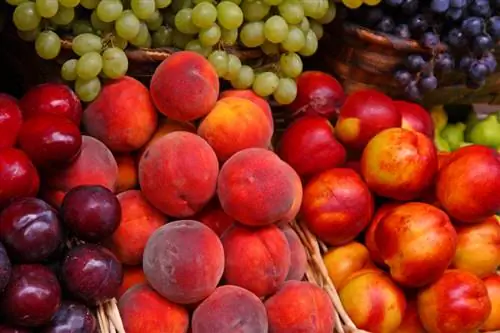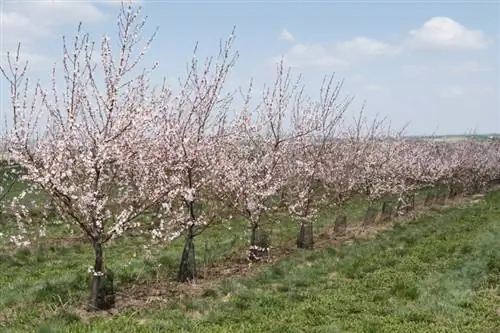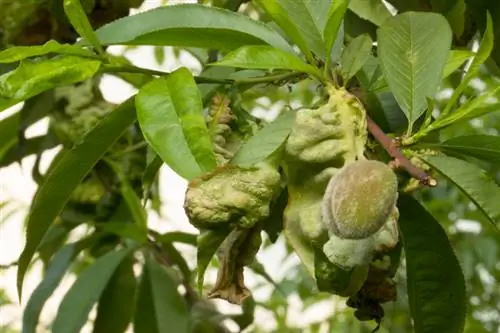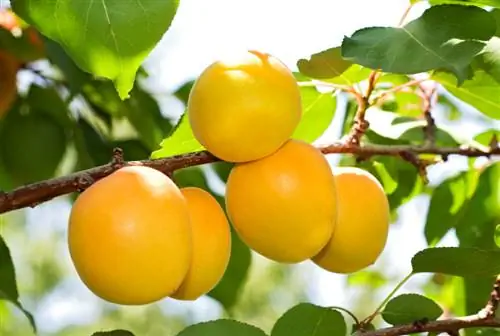- Author admin [email protected].
- Public 2024-01-02 03:03.
- Last modified 2025-06-01 06:02.
The nectarine is actually a peach or rather a mutation of the peach. However, unlike the peach, their skin is smooth and not as furry as the peach's. The smooth skin is a recessive genetic trait, so peach trees may occasionally produce nectarines.
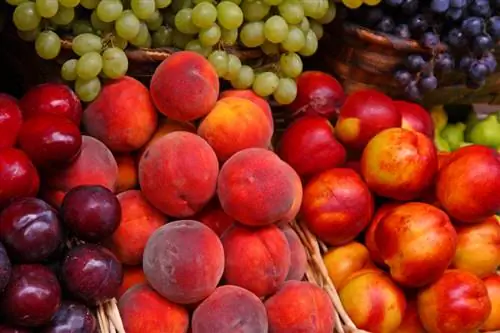
What is the difference between peach and nectarine?
A nectarine is a smooth, hairless variety of the peach that occurs due to a recessive gene. It belongs to the rose family (Prunus persica nectarina) and contains valuable ingredients such as vitamins A and E, beta-carotene and essential minerals.
The nectarine - a botanical profile
The nectarine belongs to the rose family and has the botanical name Prunus persica nectarina. With appropriate care, the nectarine tree can reach a height of three to eight meters and an age of up to 30 years. Its growth rate is comparatively slow at ten to twenty centimeters per year, especially since it has to be cut regularly.
The nectarine tree blooms from March to April in colors ranging from white to pale pink. The flowers grow before the lanceolate leaves. This is the time when the nectarine tree is very sensitive to frost. The nectarine itself is large and fleshy. Their flesh is white, yellow, orange or reddish, with the white-fleshed fruits having a particularly aromatic taste.
The ingredients of a nectarine
The yellow-red fruit has less water and more sugar than a peach. However, nectarines have a variety of valuable ingredients. Among other things, they contain vitamins A and E, beta-carotene, potassium, magnesium, zinc and selenium. They have a slightly laxative, draining effect and strengthen the connective tissue. Nectarines are a delicious table fruit that is also suitable for small snacks.
The different types of nectarines
The number of varieties of nectarines is hardly manageable and new ones are added every year, while others disappear from the market again. They vary in terms of their appearance and also in terms of their taste and aroma. While some taste slightly sour, others are very sweet.
Up to 100 different varieties of nectarines are offered throughout the season, most of which come from Californian breeding. Colors are often differentiated. The most important yellow-fleshed varieties include:
- Sunred
- Armking
- Super Crimson
- May Diamond
- Fiesta Red
- Independence and
- Summer Grand.
The most important white-fleshed varieties include:
- Firegem
- Silverking
- Snow Queen
- Flavour Giant
- Zephir
- Mid Silver and
- New Year's Eve Queen
Tips & Tricks
Nectarines taste fresh and raw, although the peel can be eaten. However, they are also suitable for fruit salads, desserts, cakes and muesli. Nectarines can also be made into jam, compote and fruit punch.

